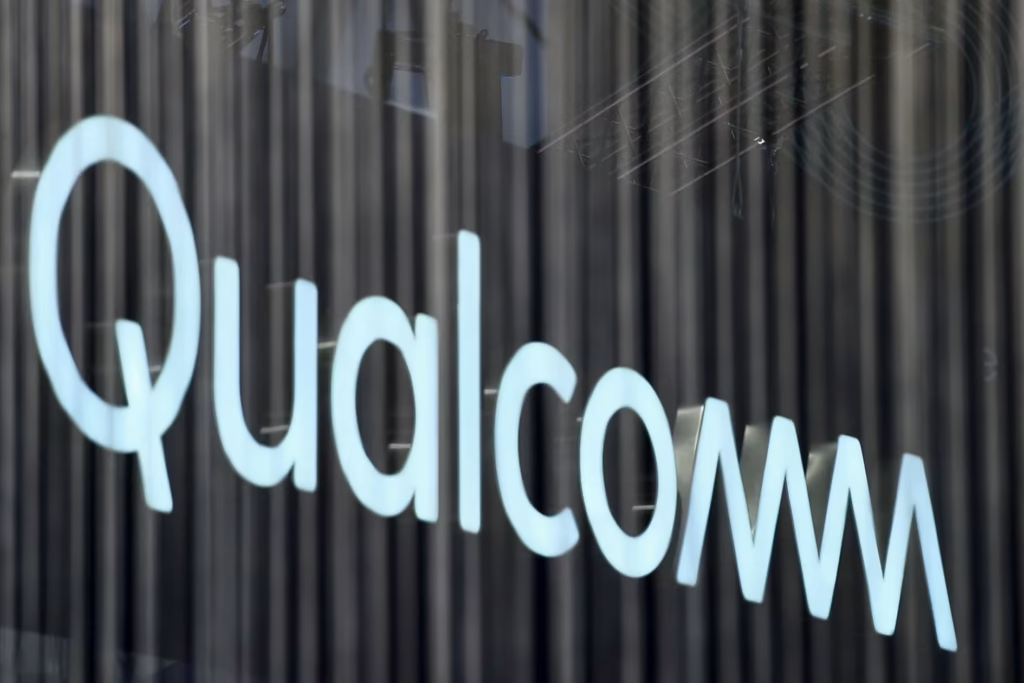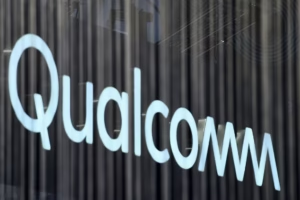Qualcomm exceeded analyst forecasts for its fiscal fourth-quarter sales.
A significant tax-related charge that Qualcomm Inc. incurred could help the company’s tax positioning in the future, but it also hurt earnings in the most recent quarter.
According to the semiconductor company, it will be able to “establish a valuation allowance against our U.S. federal deferred tax assets” in the future thanks to a $5.7 billion noncash charge for its fiscal fourth quarter.
During the company’s earnings call on Wednesday, Qualcomm Chief Financial Officer Akash Palkhiwala stated that the business anticipates “lower cash tax payments relative to prior expectations.”
This charge, which comes after a similar one that affected Meta Platforms Inc.’s (META) earnings last week, caused Qualcomm to report a $3.1 billion GAAP net loss instead of the $2.9 billion net profits it reported a year earlier. The company reported a $2.89 loss on a per-share basis, but it made $3.00 after accounting for one-time effects like the tax penalty.
Now that it has established the valuation allowance, Qualcomm anticipates “being subject to the U.S. corporate alternative minimum tax beginning in fiscal 2026,” but it is also leading the charge in tandem with new U.S. tax legislation.
Qualcomm’s (QCOM) stock dropped 2.6% during Wednesday’s after-hours trade.
The company’s fiscal fourth-quarter revenue of $11.3 billion exceeded the $10.8 billion FactSet analyst expectation. Chief Executive Cristiano Amon noted in a statement that the company’s Qualcomm CDMA Technologies division, which develops and markets chips, software, and hardware for wireless devices, has achieved record sales.
When removing Apple Inc. (AAPL), the company’s total QCT revenues increased by 18% from the prior year, according to Amon.
sales from the company’s handset business was $6.9 billion, exceeding the $6.6 billion forecast, while sales from its automobile division was $1.05 billion, just exceeding the $1 billion expert projection.
“We are excited about our business momentum, the availability of our automated driving stack and our expansion to data centers and advanced robotics,” Amon stated.
The company exceeded the expert consensus of $11.6 billion by setting its fiscal first-quarter revenue target between $11.8 billion and $12.6 billion. The midpoint of Qualcomm’s projected adjusted earnings for the December quarter, which ranged from $3.30 to $3.50 per share, also above the $3.32 consensus expectation.
See also: Qualcomm’s stock reaches a 15-month high as it steps up its AI efforts
Following the company’s announcement of two chip-based accelerator cards and data-center racks as part of a roadmap to launch multiple generations of solutions for artificial-intelligence inferencing—the process of running AI models after training—on an annual cadence, Qualcomm’s stock closed at its highest level since July 2024 in October.
According to Qualcomm, the AI200 will be commercially available beginning next year and represents the company’s launch of a “purpose-built rack-level AI inference solution” that optimizes performance for big language and multimodal models while having a lower total cost of ownership.
“An innovative memory architecture based on near-memory computing,” according to the business, will enable the AI250, which is anticipated to arrive in 2027, to provide “greater than 10x-higher effective memory bandwidth” and lower power consumption.
Humain, a Saudi AI company, will be the first to use the devices beginning next year, according to Qualcomm, which plans to deploy 200 megawatts of the rack-scale systems.
In an October note, Melius Research analyst Ben Reitzes stated, “The product has a potential to generate billions in revenue with a deep-pocketed customer like Humain.” According to him, “Humain’s ability to scale isn’t yet proven.”
Reitzes added that because Qualcomm uses low-power double data rate, or LPDDR, a type of random-access memory commonly found in mobile devices, rather than high-bandwidth memory, its specifications for its products “seem to be much lower than” those of Nvidia Corp. (NVDA) and Advanced Micro Devices Inc. (AMD). Additionally, he pointed out that Nvidia employs its NVLink connection for scaling up, whereas Qualcomm uses the Peripheral Component connection Express, or PCLe, high-speed interface standard.
Humain scaled to between $1 billion and $2 billion in annualized sales in the latter half of the decade, according to the Melius team’s estimate of Qualcomm’s operations, however Reitzes pointed out that the company’s margins might trend below average.
Apparently hoping to capitalize on the impending inferencing boom, Reitzes stated that “the key for [Qualcomm] from here is whether any other nonsovereign customers will be interested, indicating broader adoption.”
“A needed diversification away from the low-growth smartphone market,” which accounts for roughly 75% of the company’s QCT revenues, was what Tal Liani of Bank of America described in an October note as the announcement. The decision “is addressing a market that we expect to grow to $114 billion by 2030, with key customers looking for vendor diversity outside of the likes of Nvidia,” Liani stated.
But according to Liani, Qualcomm’s outlook for 2026 “is limited with a single deal” and it must demonstrate that its technology can be implemented.
According to Reitzes, worries about Qualcomm losing its modern business with Apple have had a detrimental effect on the company’s stock multiple. He pointed out that even though it has “great chipset and modem technology,” that multiple has been reduced to 10x.





